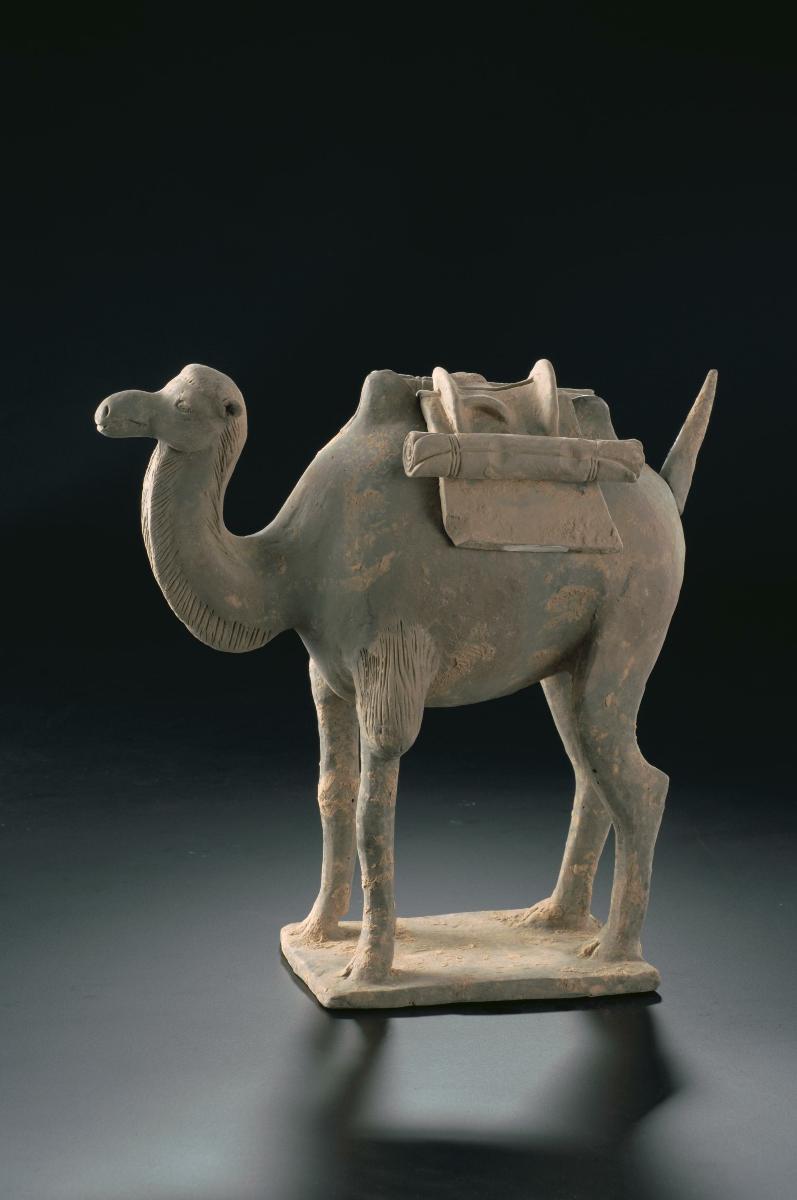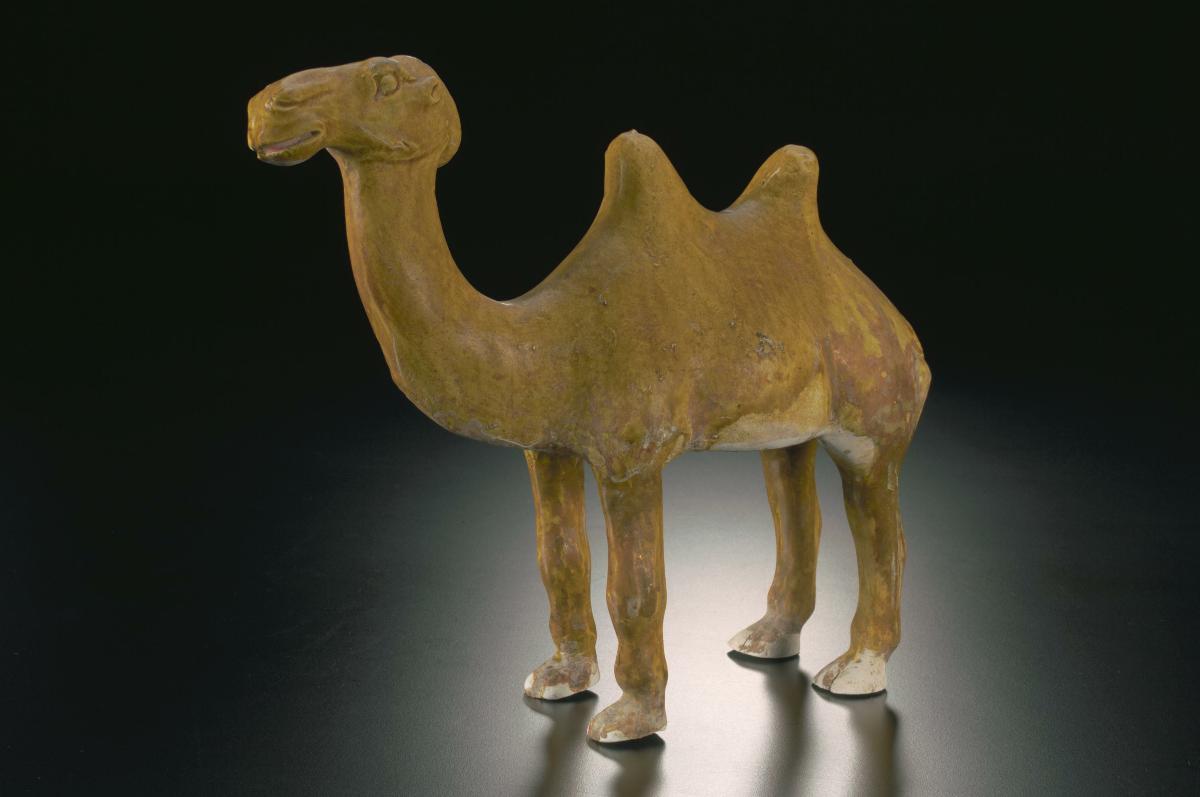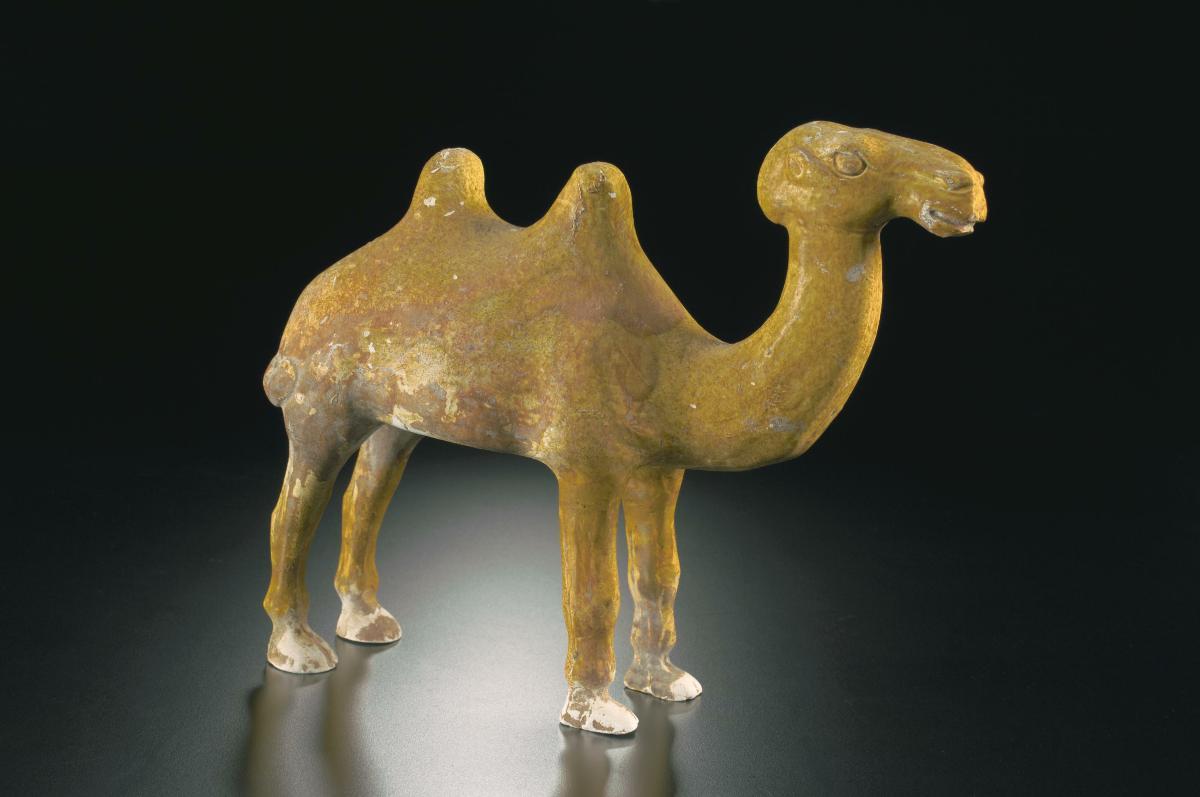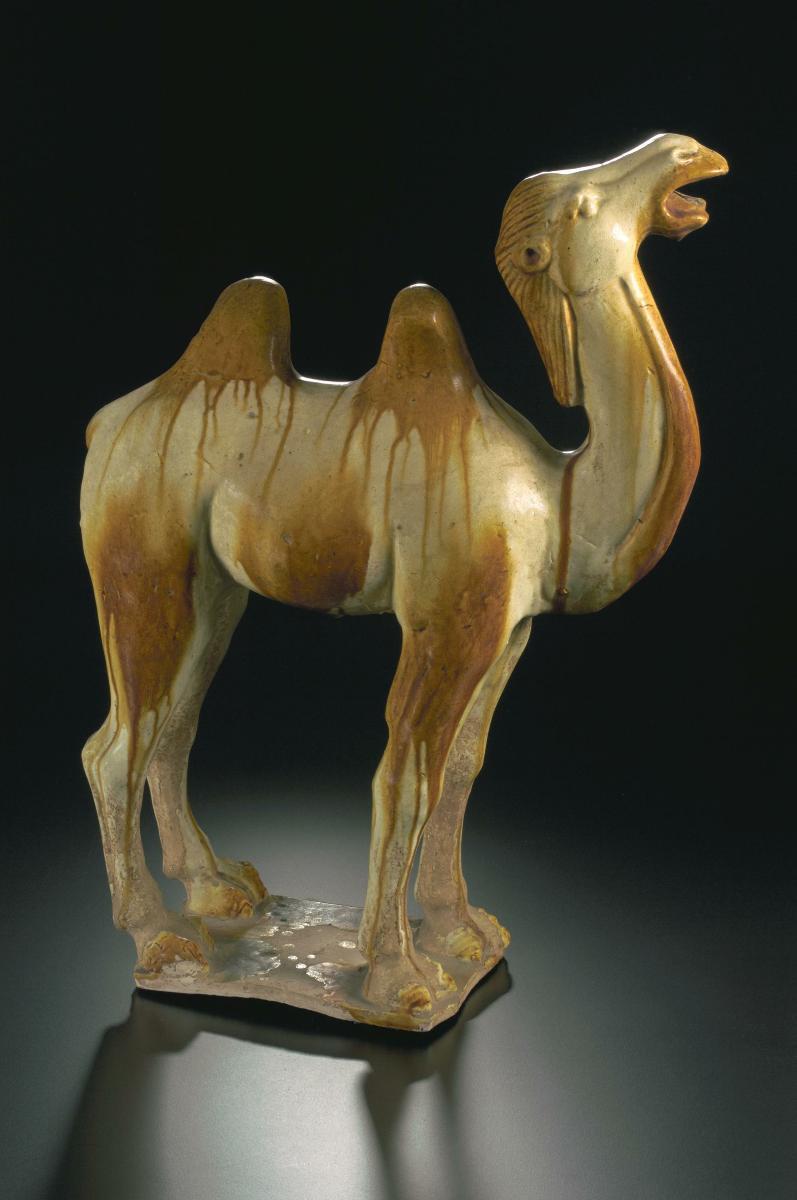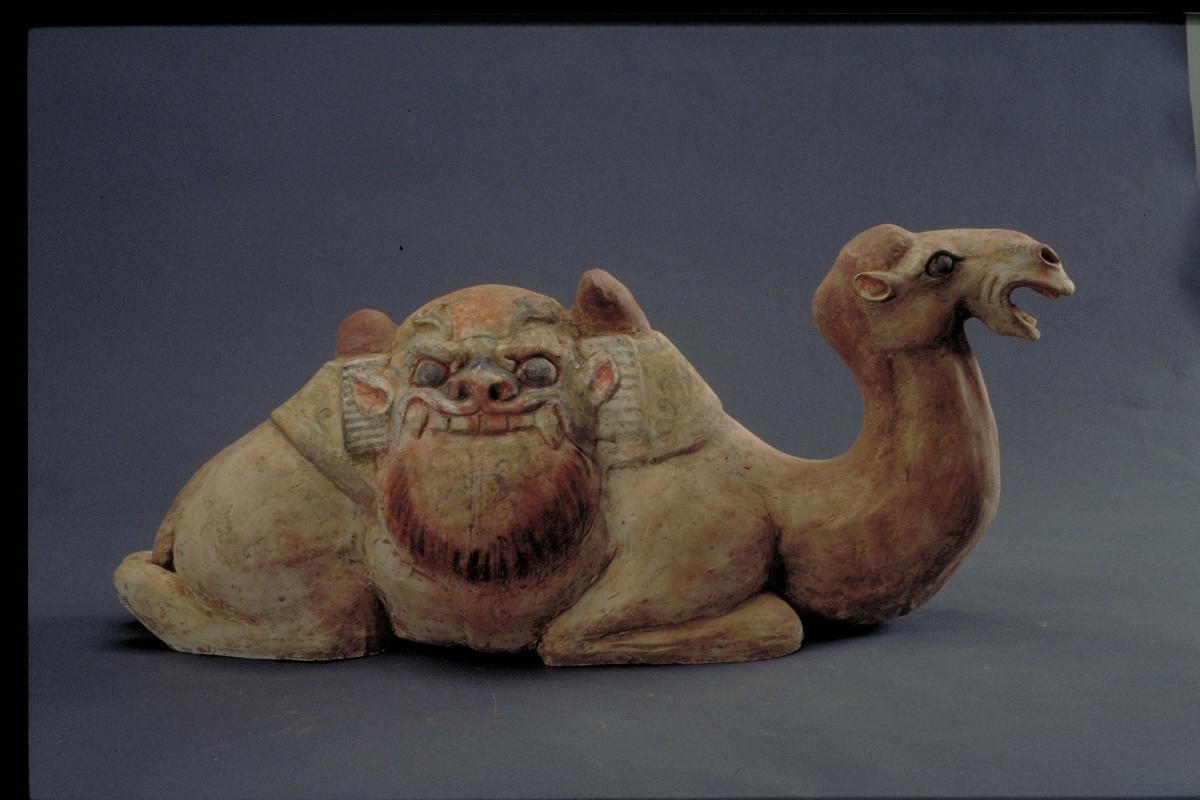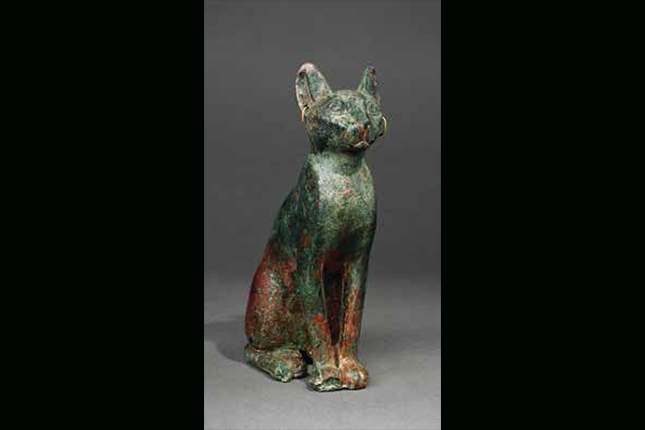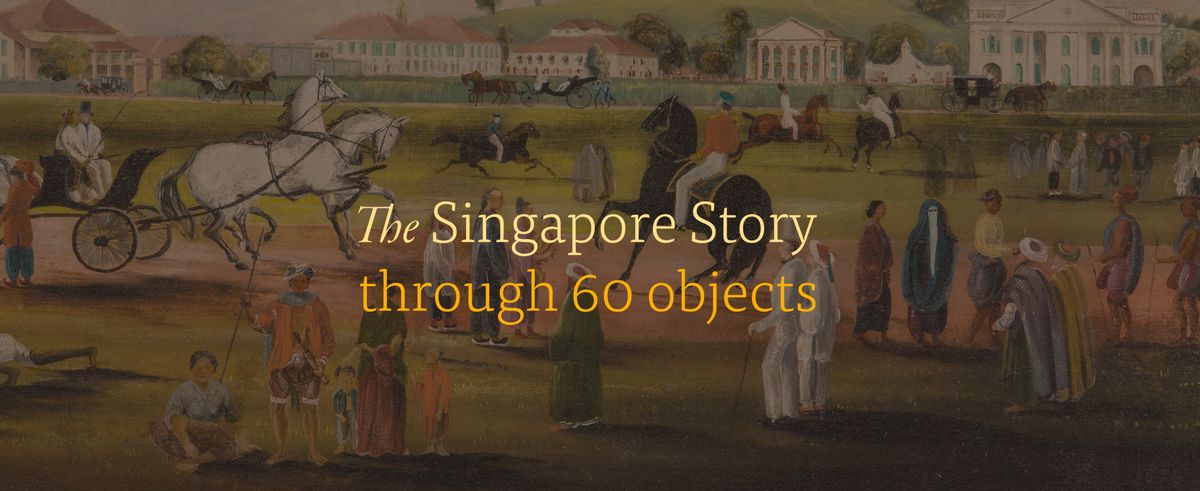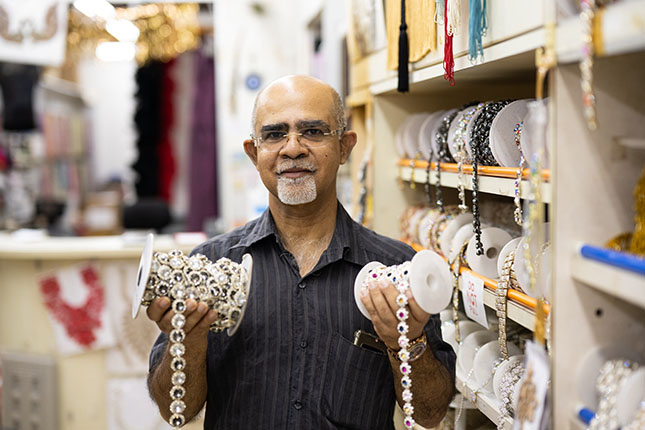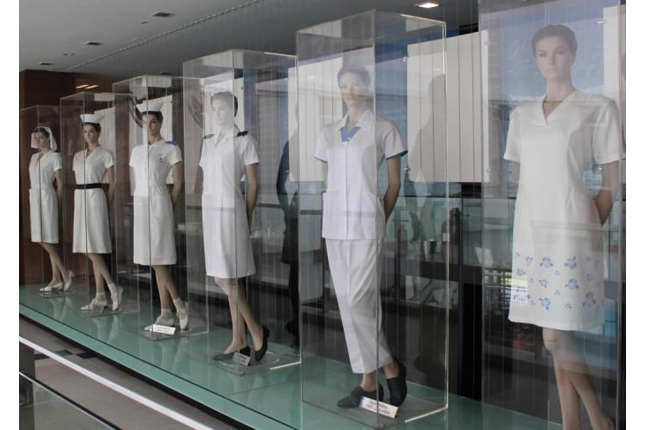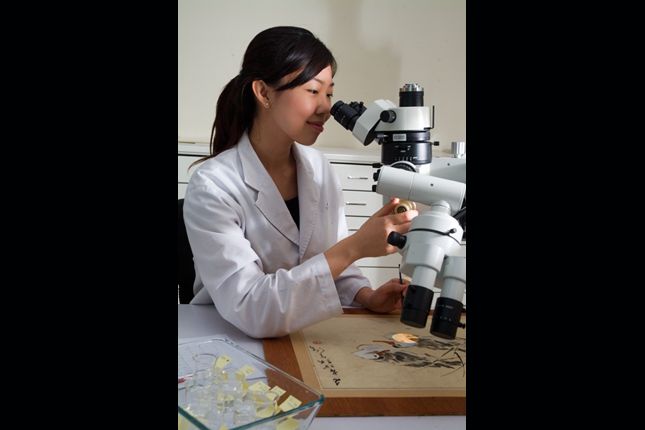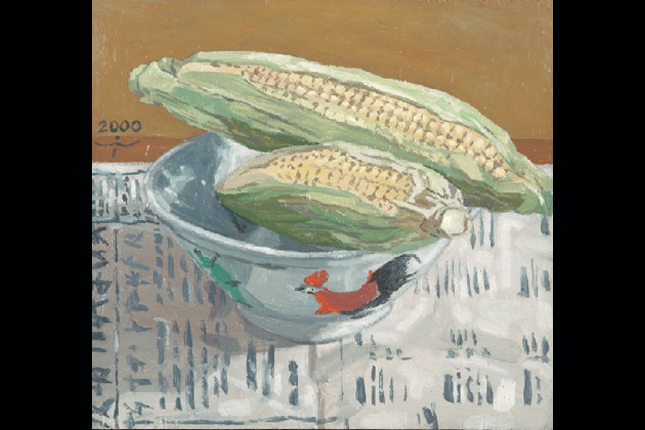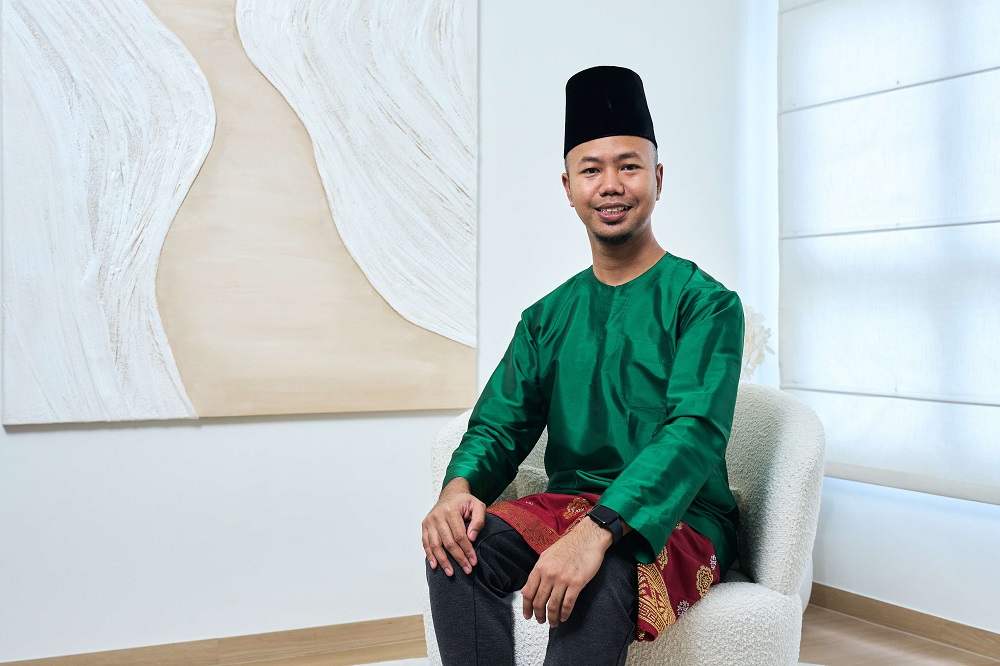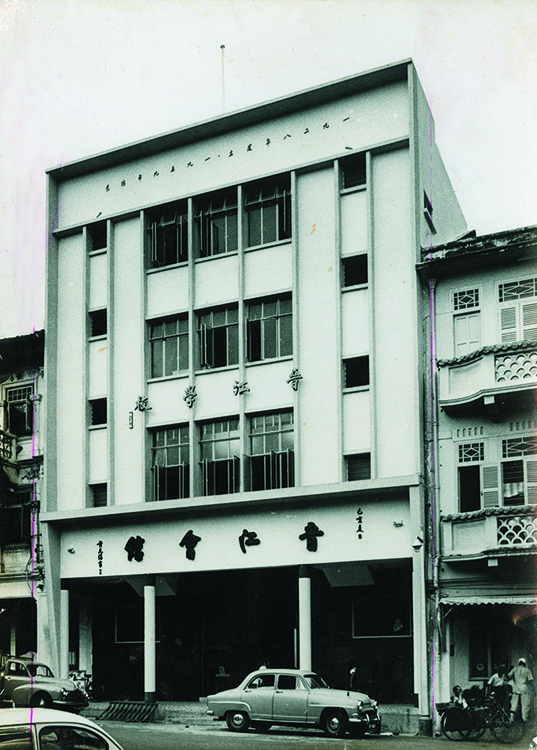Object size: Tail: L7.0 cm,
Object size: Saddle: L10.0 cm,
Object size: Width: L8.0 x H8.0 cm,
Object size: 29.0 x 28.0 x 11.5 cm
This grey pottery figure of a two-humped camel was a funerary item found in the tombs of ruling elite to provide for their afterlife. It has a detachable saddle and tail.The two-humped Bactrian camel was a symbol of commerce that took place along the Silk Road. Trading on the Silk Road was often a difficult journey through mountains and deserts of Central Asia. It could often only be navigated by the camel, an animal able to withstand the burning heat and freezing cold of the desert. Chinese artists began to make models of this creature for use as 'mingqi' or burial wares from the Northern Wei dynasty (386-535 CE) onwards. This practice continued into the Ming and Tang dynasties as burial wares were still considered important for the afterlife.The custom of making ‘mingqi’ or burial wares was an ancient practice. Elaborate groups of burial wares were also a display of wealth and social status.




